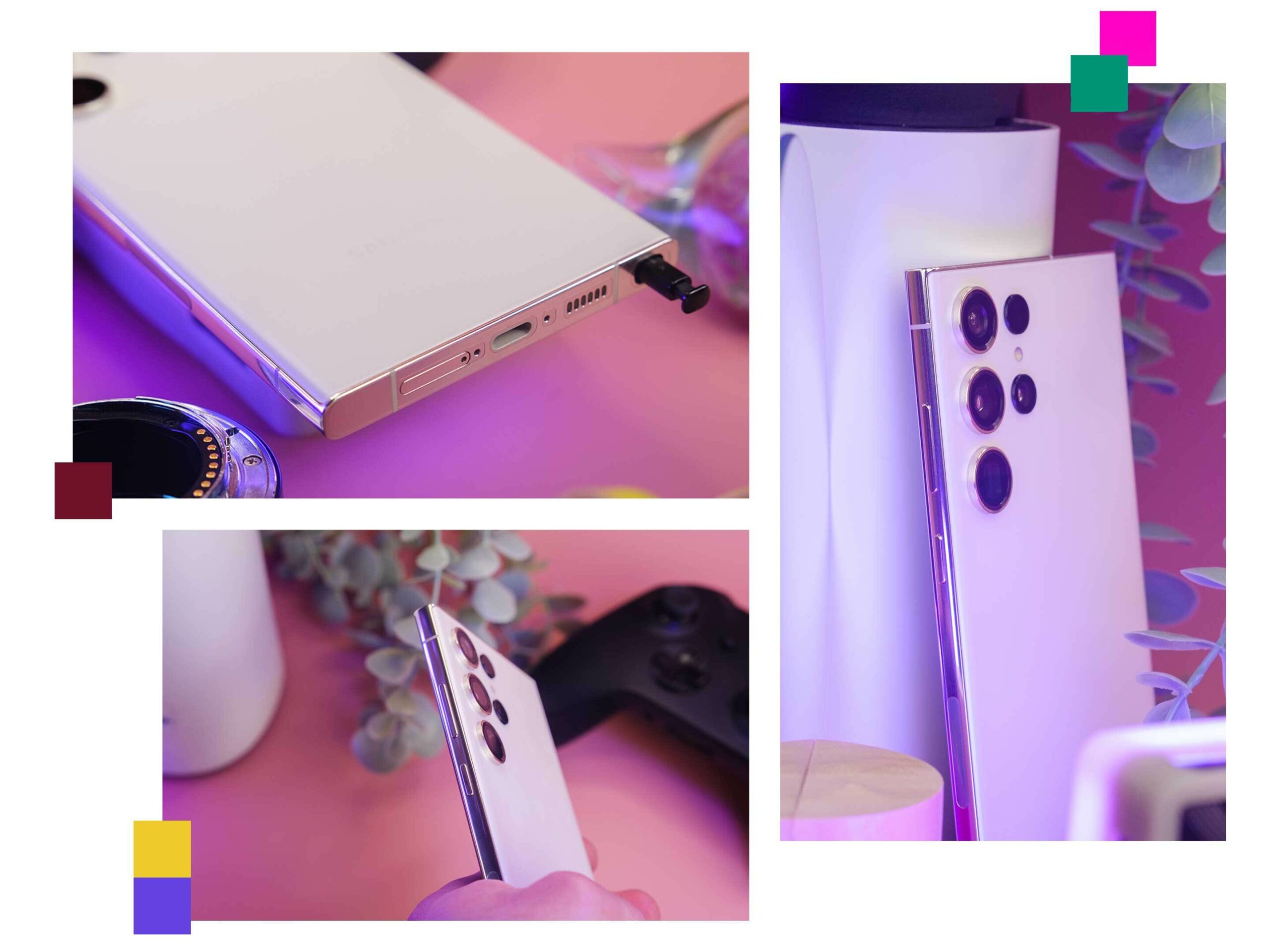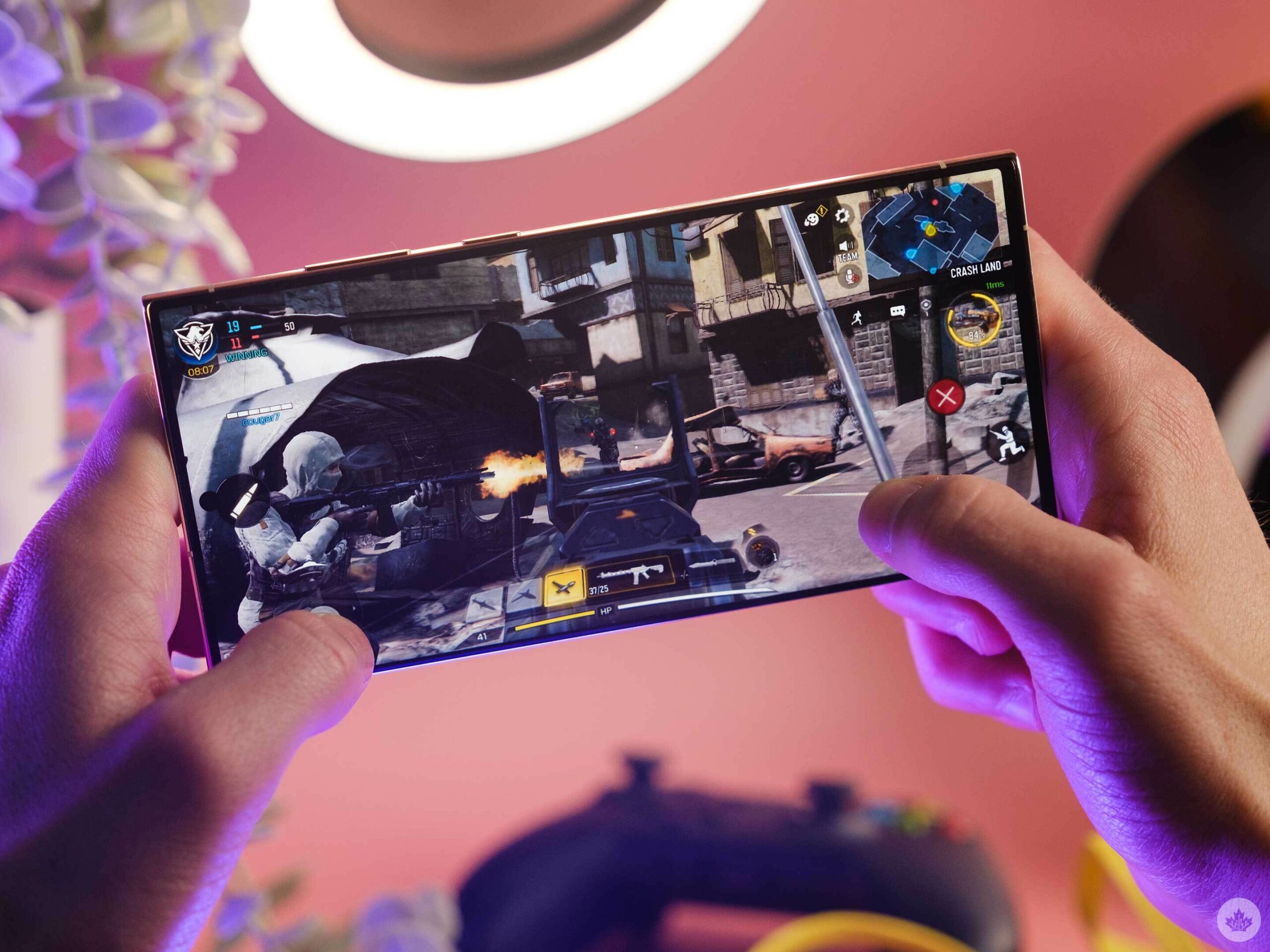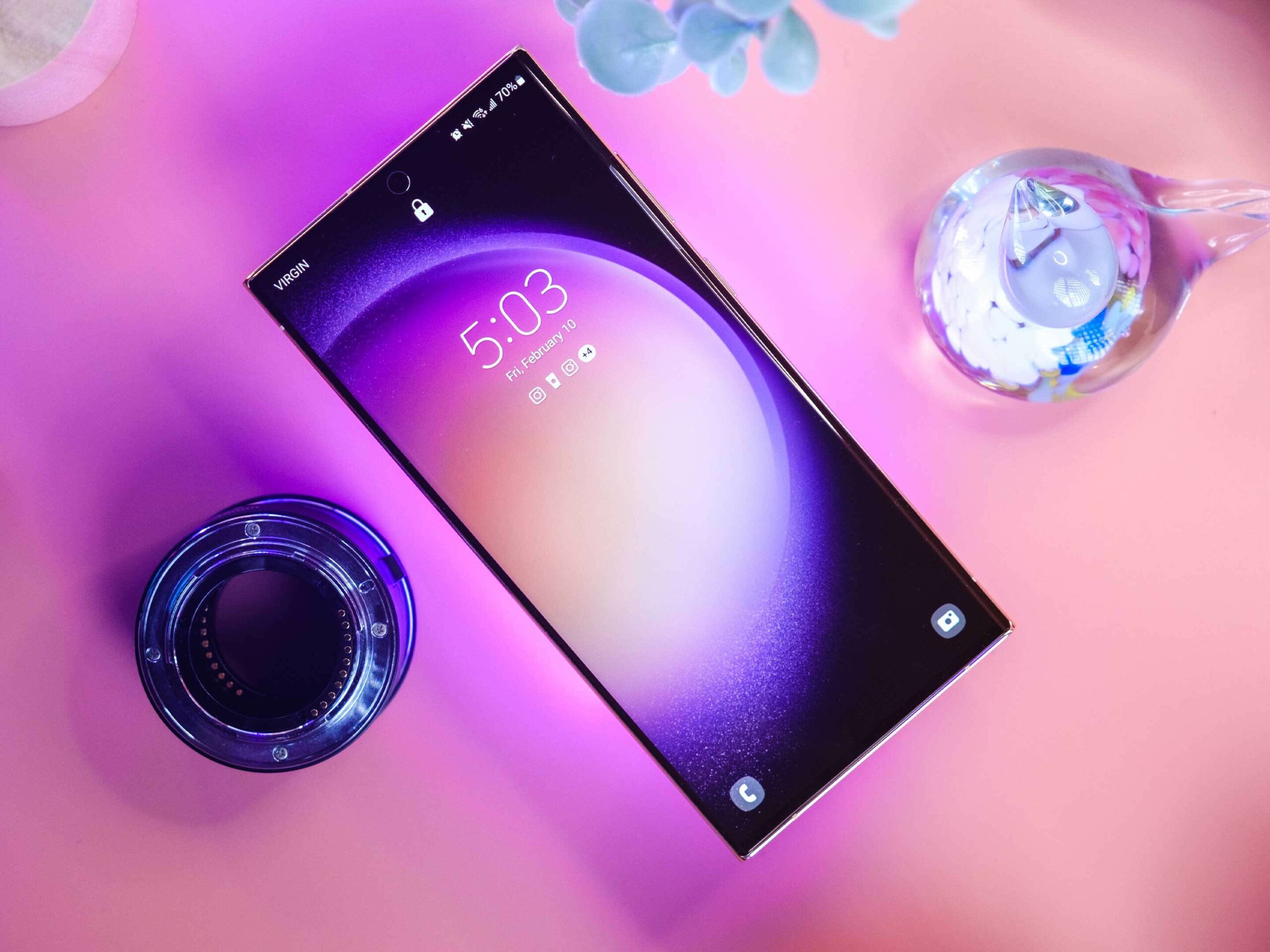Samsung’s latest flagship isn’t a drastic change from its predecessor, so for most people, the S22 Ultra should probably be your next high-end Android purchase, especially now that it’s cheaper. With the Galaxy S23 Ultra, you get mostly the same specs as the S22, except for an upgraded processor, a downgraded selfie camera and an astonishingly great 200-megapixel primary camera.
I typically compare Samsung’s ‘Ultra’ flagship to phones like the Pixel 7 Pro, but in the Canadian Android landscape, there isn’t really anything that compares to the S23 Ultra. Two phones that are $500 apart can’t really be compared to one another.
Samsung’s latest smartphone sports several of the best tech specs available with any Android device; however, the South Korean company could have taken this phone further in many ways beyond the 200-megapixel primary camera because there isn’t enough that’s new this year.
6.8-inch Curved Dynamic AMOLED, 1,440 x 3,200 pixels, 20:9 aspect ratio, 120Hz display (variable 1-120Hz) HDR10+, 240Hz Touch Sampling in Games
6.8-inch Curved Dynamic AMOLED, 1,440 x 3,200 pixels, 20:9 aspect ratio, 120Hz display (variable 1-120Hz), HDR10+, 240Hz Touch Sampling in Games
Qualcomm Snapdragon 8 Gen 2
200-megapixel, 12-megapixel (f/2.2, 120-degree), 10-megapixel (f/4.9, 10x zoom), 10-megapixel (f/2.4, 3x zoom)
108-megapixel (f/1.8), 12-megapixel (f/2.2, 120-degree), 10-megapixel (f/4.9, 10x zoom), 10-megapixel (f/2.4, 3x zoom)
Fingerprint (in-display), accelerometor, gyro, proximity, compass
Fingerprint (in-display), accelerometor, gyro, proximity, compass
Colours: ‘Phantom Black,’ ‘Green,’ ‘Lavendar,’ ‘Creme’
Colours: ‘Phantom Black,’ ‘Phantom White,’ ‘Green,’ ‘Burgundy,’ and Samsung exclusive colours ‘Gray,’ ‘Light Blue,’ and ‘Red.’ & S Pen with 2.8 m/s latency
6.8-inch Curved Dynamic AMOLED, 1,440 x 3,200 pixels, 20:9 aspect ratio, 120Hz display (variable 1-120Hz) HDR10+, 240Hz Touch Sampling in Games
6.8-inch Curved Dynamic AMOLED, 1,440 x 3,200 pixels, 20:9 aspect ratio, 120Hz display (variable 1-120Hz), HDR10+, 240Hz Touch Sampling in Games
Qualcomm Snapdragon 8 Gen 2
200-megapixel, 12-megapixel (f/2.2, 120-degree), 10-megapixel (f/4.9, 10x zoom), 10-megapixel (f/2.4, 3x zoom)
108-megapixel (f/1.8), 12-megapixel (f/2.2, 120-degree), 10-megapixel (f/4.9, 10x zoom), 10-megapixel (f/2.4, 3x zoom)
Fingerprint (in-display), accelerometor, gyro, proximity, compass
Fingerprint (in-display), accelerometor, gyro, proximity, compass
Colours: ‘Phantom Black,’ ‘Green,’ ‘Lavendar,’ ‘Creme’
Colours: ‘Phantom Black,’ ‘Phantom White,’ ‘Green,’ ‘Burgundy,’ and Samsung exclusive colours ‘Gray,’ ‘Light Blue,’ and ‘Red.’ & S Pen with 2.8 m/s latency
The best thing about this phone
Let’s start with what’s good. In the Canadian market, you won’t find a better camera on an Android device. The handset boasts a 200-megapixel primary camera that bins 16 pixels together to create large 12-megapixel shots. The pictures offer beautifully accurate colours, and the smartphone expertly shows high dynamic range that artfully captures sunsets. Even compared to its predecessor, the S23 Ultra captures far more details in photos.
During my time with the S23 Ultra, I took various pictures of San Francisco’s Golden Gate Bridge, Pier 39, and the Palace of Fine Arts. Pictures of the bridge reveal its beautiful red tones, and Pier 39’s seal lions are still incredibly adorable and vibrant. In the pictures of the Palace of Fine Arts, you can see the detailed columns, the vibrant colours on the mallard ducks and how the sun appears behind the intricate architecture.

The Galaxy S23 Ultra’s low-light camera performance is still superb and better than last year’s performance in certain situations. In some images, the device knows how to fix the lighting in the post, resulting in a more true-to-life photo. When there’s too much darkness, the S23 Ultra brightens the entire image. In this picture taken at night of a graffiti-covered garage, you can see how the colours are vibrant and yet more realistic compared to what I snapped with the S22 Ultra.

Samsung’s S23 Ultra also features three more cameras: an ultra-wide with a 12-megapixel sensor with a 120-degree lens, a 12-megapixel sensor with a 10x zoom lens and another with a 3x telephoto lens.
Like last year, the S23 Ultra’s 10x shooter is a beast and can snap detailed photos from quite a distance away. 100x zoom is here again, but unfortunately, it still looks blurry and digitized. That said, even after three years of this feature being around, I still find it impressive in some ways. Portrait mode pictures are similar and offer depth mapping, which applies additional detail to the hair and ensures images stay sharp. For example, you can even distinguish between individual hair follicles in my beard.
When you flip the handset over to its front, you’ll encounter its downgraded 12-megapixel selfie camera. For the past three years, Samsung’s Ultra smartphones have featured a 40-megapixel selfie shooter, so it’s strange to see the company lower the quality. The 12-megapixel camera takes decent shots, and I can’t really tell the difference between selfies I’ve taken with it compared to the ones I’ve shot with the S22 Ultra. Lowlight selfies aren’t necessarily the best. Sure, the images are bright, but these pictures have tons of smoothening and look over-processed.

The S23’s video quality is fantastic. The phone features even better Portrait Video than the S22 Ultra that can be shot at UHD/30fps, similar to Apple’s iPhone 14 Pro. Improved from last year, the phone does a better job at keeping people and objects in the frame. However, the S23 Ultra is always looking for the person’s face. Additionally, you can also control the background blur intensity, and there are different variants of the background blur as well, which was available last year as well.
I’m really fond of the cameras available in the S23 Ultra, and would even go so far as to say that I’d opt for its lenses over the iPhone 14 Pro. Not only are its shooters high quality, but they’re also more versatile than Apple’s offerings. And while I like the Pixel 7 Pro’s camera quality, the S23 Ultra’s camera captures details that the other Android could only dream of.
The S23 Ultra’s cameras are the best part of the phone, and it’s pretty downhill from here. That’s not to say the design, the S Pen, or its Snapdragon 8 Gen 2 are bad — they just don’t offer much of an upgrade over the S22 and don’t feel as special.
Too similar
The S23 Ultra features a very similar design to its predecessor, with Samsung taking the “if it ain’t broke” approach this year. The phone has a 6.8-inch display and a rectangular body. It also sports Gorilla Glass Victus 2 on both the front and rear. The S23 Ultra feels solid, it isn’t too heavy — if you’re already used to larger handsets — and fits comfortably in my hand. When I first picked up the phone, I thought it felt better than the S22 Ultra, but the longer I spent with this device, I find compared to its predecessor, they’re pretty much the same.
On the rear, the S23 features no camera bump, similar to its predecessor. The sensors protrude from the handset’s rear, which means the phone doesn’t sit flat on its back. I’m on the fence about whether I like this design, but most people are over the camera bump debate when it comes to smartphones.

The previously mentioned 6.8-inch display sports a 3120 x 1440 pixel resolution, and everything, from looking at pictures to watching videos and playing games, looks crisp and vibrant. The handset also sports a 120Hz refresh rate that can dip as low as 1Hz when you’re looking at a static page. 120Hz is great, but some phones are starting to push to a 144Hz refresh rate. While this higher refresh rate is unnecessary, and you probably wouldn’t be able to tell the difference between 144Hz and 120Hz, if you’re paying more than $1,600 for a phone that doesn’t fold, it should come with all the bells and whistles.
On the inside
The S23 Ultra features 8GB and 12GB variants, starts at 256GB of storage but can go all the way up to 1TB, and sports Qualcomm’s Snapdragon 8 Gen 2 processor. While benchmarks don’t equate to how well your handset runs, with Geekbench 6, the Galaxy S23 Ultra had a single-core score of 1,943 and a multi-core score of 5,112.
“Years ago, Android phones were innovative and offered interesting, sometimes gimmicky features, which is what attracted me to them.”
Moving on, I still think it’s weird that the handset starts at 8GB of RAM; a couple of years ago, the S21 Ultra started with 12GB of RAM, so I’m unsure why Samsung is going backwards. Again, if you’re paying this much for a phone, it should at least start at 12GB of RAM. You may not be able to tell the difference, but it improves the device’s performance, especially when you’re running multiple apps at once. My review unit features 12GB of RAM and 1TB of storage, and alongside the processor, everything moves quickly and smoothly.

The games play well. I’ve tried a couple of games of PUBG Mobile and a lot of Marvel Snap matches. After several games of Marvel Snap (probably half an hour’s worth), I noticed the phone started to warm up. However, this would likely happen with any Android handset.
The Galaxy S23 Ultra can easily survive a day of usage. This includes watching a few YouTube videos, texting, scrolling through Instagram and more. Typically, on these days, I still have enough juice to get me through to the next day with some leftovers in the morning.

On days with more hardcore usage, like when I took pictures and videos for this review, I only had about 10 percent battery at about 9pm. Overall, this is better battery performance than last year’s S22 Ultra, even though the battery is the same size. Samsung has reportedly improved the screen on the S23 Ultra so it consumes less power, which could explain why this is the case. For the most part, if I charged the S23 Ultra overnight, I didn’t have to worry about the device dying for the rest of the day.
As for its speaker, the S23 Ultra is louder than its predecessor. Using the Sound Meter app, I determined that music peaked around 79 to 82 decibels, which equates to “busy traffic” according to the app. This makes it even louder than the Pixel 7 Pro, S22 Ultra and other flagship handsets like the Z Fold 4. However, volume isn’t everything when it comes to music, and you’ll still want to listen to music on headphones or speakers if you want good bass.

